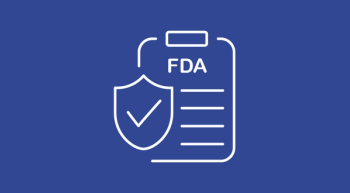
- December 2013
- Volume 7
- Issue 9
ALK-Positive Criteria for Determining Crizotinib Use May Fall Short
The criteria that are presently used to determine whether patients with non-small cell lung cancer (NSCLC) may be suitable for treatment with the ALK inhibitor crizotinib may overlook some patients who may benefit from the drug, researchers report.
D. Ross Camidge, MD, PhD
The criteria that are presently used to determine whether patients with non-small cell lung cancer (NSCLC) may be suitable for treatment with the ALK inhibitor crizotinib may overlook some patients who may benefit from the drug, researchers report. In particular, they noted that borderline and atypical ALK-negative cases need closer scrutiny. (Cancer. 2013. doi:10.1002/cncr.28311)
D. Ross Camidge, MD, PhD, University of Colorado Cancer Center in Denver, and associates tested 1426 NSCLC clinical specimens for ALK rearrangements.
Overall, 174 specimens were ALK-positive by conventional criteria, and 1252 were ALK-negative.
Screening patients with advanced NSCLC for an ALK rearrangement has been adopted as standard care based on the “dramatic and prolonged” objective responses that have been documented when these patients are treated with ALK inhibitor therapy, such as the orally bioavailable crizotinib, the investigators observed. As a result, identifying subsets of patients who are most likely to benefit from such treatment is important.
ALK gene rearrangements are the “primary oncogenic driver” in some types of lymphomas and solid tumors, the researchers said. The ALK Break Apart FISH (fluorescence in situ hybridization)Probe Kit is the only ALK diagnostic assay that is approved by the FDA.
Preliminary data suggested that a cutoff point of either ≥15% or >15% of cells demonstrating an ALK rearrangement by Break Apart FISH assay for classifying a tumor as ALK positive would yield few borderline cases, Camidge et al pointed out. The >15% cutoff point used in the early crizotinib studies and the ≥15% cutoff point used by the FDA “appeared to develop in a naturally occurring gap in the continuum of the assay.” However, the present “much larger series” indicates that “considerable proportions of ‘negative’ cases closely approach the established cutoff points,” they added.
Specifically, of the ALK specimens that were determined to be negative by standard criteria, 121 had ≥10% ALK positivity but were still less than the 15% level required in order to classify the tumor as ALK positive.
Overall, the findings showed that 8.5% of tumors fall below the established positivity threshold by ≤5%, and are thus deemed “borderline negative.”
In addition, 1%-2% also demonstrated atypical negative patterns, meaning that they did not satisfy the current Break Apart assay positivity criteria but have evidence of potential complex rearrangements within the ALK locus, such as 3’ ALK doublets or single 5’ ALK.
Camidge and associates said that additional examination of ALK in such cases by other diagnostic approaches such as immunohistochemistry may be needed.
“By capturing clinical outcomes from atypical negative and borderline negative FISH cases in which the second diagnostic suggests the true presence of an activating rearrangement, it should be possible to minimize missed therapeutic opportunities among the true inhibitor-sensitive, ALK-positive population,” the authors reported.
On November 20, 2013, the FDA granted regular approval for crizotinib capsules for the treatment of patients with metastatic NSCLC whose tumors are ALK-positive as detected by an FDA-approved test.
This approval was based on demonstration of superior progression-free survival and overall response rate for crizotinib-treated patients compared with chemotherapy in patients with ALK-positive NSCLC with disease progression after platinum-based doublet chemotherapy.
Crizotinib was previously granted accelerated approval in August 2011.
Nurse Perspective
David Leos, RN, MBA, OCN
Clinical Research Nurse Supervisor
Department of Radiation Oncology
UT MD Anderson Cancer Center
Houston, TX
We are well into the age of what the literature cites as precision cancer or genomics-driven medicine. The findings presented in this article provide encouraging evidence to expand the current boundaries that define genomic testing guidelines for ALK mutations in NSCLC. This is an incremental, yet vital, step that we’d expect to see as new diagnostic technologies emerge or are refined.
In this case, the research suggests reconsidering the cutoff point for Break Apart FISH assay and the use of other diagnostic techniques such as immunohistochemistry (IHC) to improve detection rates of treatment targets in NSCLC. The original article cited case studies indicating that tumors designated as ALK-negative by FISH assay could actually be positive by incorporating other testing means to augment the assay’s true-positive rate.
Now that mutational status testing is widely accepted as a standard of treatment (or pretreatment as it were), this article sheds necessary light on the borderline cases—those thought, perhaps prematurely, not to have a potential for benefit from an ALK inhibitor. A more precise way of culling out those true inhibitor-sensitive patients who will derive benefit from those who will not would provide both safety and financial benefits. Those latter patients are more likely to experience mostly the side effects rather than the response from treatments that by any measure are not inexpensive.
As nurses, we must not only have awareness, but as much as possible, we need to be up-to-date with the increasing trove of cancer genomic information. For those of us whose patient population includes the diagnosis of NSCLC, this is a subject with which a subset of our patients will grapple and need our assistance in deciphering all of its complexity. It befits our educational role as nurses to have this knowledge for our patients and ourselves as professionals.
Articles in this issue
almost 12 years ago
Aldoxorubicin More Effective Than Doxorubicin in STSalmost 12 years ago
PARP Inhibitors Reemerge as Treatment for Serous Ovarian Canceralmost 12 years ago
Subgroup Analyses Show Depth of Everolimus Benefit in BOLERO-2almost 12 years ago
Stem Cell Transplantation May Impair Sexual Healthalmost 12 years ago
Analysis Finds Cancer Care Coordination Increases Patient Satisfactionalmost 12 years ago
Standardizing Palliative Care Referrals and Distress Assessmentalmost 12 years ago
Evidence-Based Guidelines Needed for Immunotherapy-Related Adverse Eventsalmost 12 years ago
Preventing and Managing Treatment-Related Lymphedemaalmost 12 years ago
Offering Durable Responses With Less Toxicity in MelanomaNewsletter
Knowledge is power. Don’t miss the most recent breakthroughs in cancer care.
















































































